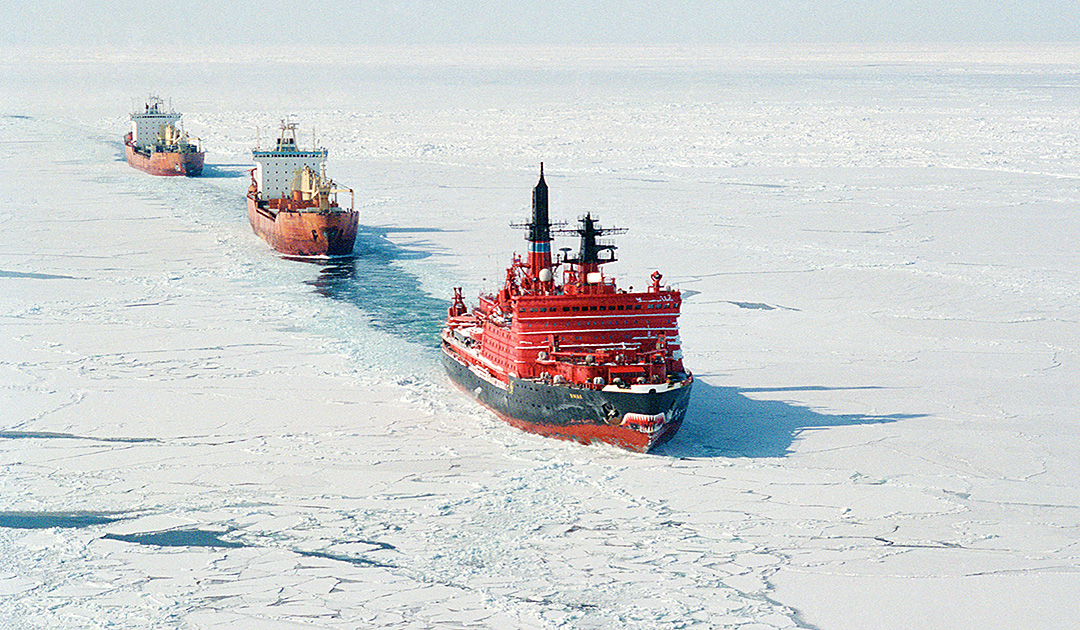
The global transport of goods depends to a large extent on shipping and also on some bottlenecks such as the Suez Canal. This dependence could be greatly reduced by alternative routes through the Arctic. But the environmental risks to Arctic ecosystems from fossil fuels and the use of inappropriate vessels are far too high and also too costly. This is the conclusion reached by a British research group in a newly published study. But they also point to a possible solution to this conflict.
More investment in the development of alternative fuels, the inclusion of implicit costs of environmental damage in the assessment of cost-benefit calculations by the shipping industry and, last but not least, the improved inclusion of environmental considerations in the decision-making of politicians are a possible way towards more sustainable shipping through the Arctic. This is the conclusion reached by the research group of the University of London in their newly published study. This was recently published in the journal Transportation Research Part A: Policy and Practice in a special issue on “Sustainable Arctic Systems.”

The team, led by lead author Joseph Lambert, a student at the University of London’s Energy Institute, looked at both the economic and environmental costs and competitiveness of Arctic shipping under two different environmental scenarios: no restrictions on emissions (business as usual) by policy makers and industry, and a zero emissions scenario using “green” fuels. “Significant change is under way in the Arctic region due to global warming and from a shipping perspective we should prepare for what this means through assessing all the opportunities, risks and trade-offs that aren’t exclusively financial.,” Lambert says in response. The researchers focused their model calculations on emissions and their impact on the environment and health, leaving out the costs from other environmental hazards for the time being. This would be followed up in another study, the team writes in its paper. “This is a novel work that shows the economic costs alongside the environmental costs for the Arctic route, as well as showing how certain technology choices, that could be incentivised through policy, could significantly reduce the environmental costs that would otherwise arise from Arctic shipping,” says Dr Tristan Smith of the University’s Energy Institute.

According to the researchers’ model calculations, a purely economic consideration of the costs of shipping without including the environmental costs means a clear advantage for the use of fossil fuels. According to the model calculations, shipping along the Arctic routes (summer) in combination with the Suez route (winter) would thus be profitable in 2035 and from 2050 onwards due to the loss of Arctic ice. It is only the cost of the damage to the environment and the health of the Arctic inhabitants that makes shipping through the Arctic unprofitable in its present form, a fact that has so far been insufficiently taken into account. Switching to alternative fuels would then be the most economical as well as the most environmentally friendly way to ensure the viability of shipping.
“The paper shows a clear justification for governments to intervene now to prevent a melting Arctic’s enabling of a reduction in shipping costs because of further acceleration of the degradation of this crucial ecosystem”
Dr. Tristan Smith, Energy Institute, University of London
Regarding the type of alternative fuel, the authors conclude that the use of ammonia-based fuel cells would be the best solution, as both their production and use would be practically emission-free. The prerequisite for this, however, would be green electricity production for the manufacture of ammonia. This means that politicians outside the Arctic nations would also have to step up their efforts to produce energy in a more environmentally friendly way. “The paper shows a clear justification for governments to intervene now to prevent a melting Arctic’s enabling of a reduction in shipping costs because of further acceleration of the degradation of this crucial ecosystem,” Dr Smith says. And Joseph Lambert concludes, “It is critical that the Arctic ice maintains its permanency — in order to stay within global warming targets and to protect the region’s ecology.”
This work should be good news for environmental organizations like the International Council on Clean Transportation ICCT, which has been fighting for a more sustainable transportation solution through the Arctic and against pollution from emissions for years.
Dr Michael Wenger, PolarJournal
More on the subject:





